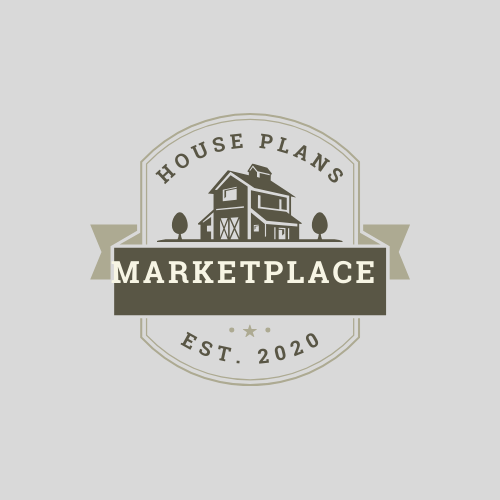When it comes to multi family homes floor plans, one surprising fact is that they have become increasingly popular in recent years. With the rising cost of living and the demand for affordable housing, more and more people are opting for multi family homes as a practical and cost-effective solution. These homes offer the advantage of shared expenses and amenities, making them an attractive option for families and individuals alike.
Multi family homes floor plans have evolved over time to meet the changing needs of modern families. In addition to providing separate living spaces for multiple families, these floor plans often incorporate common areas where residents can come together and socialize. This sense of community is important, as it promotes a stronger bond among neighbors and fosters a greater sense of belonging. With the increasing demand for multi family homes, developers are constantly innovating to create functional and well-designed floor plans that cater to the diverse needs of families and individuals.
When it comes to multi-family homes, having well-designed and functional floor plans is essential. These plans determine the layout and flow of the spaces, providing optimal living arrangements for multiple families. From spacious common areas to individual apartment layouts, multi-family homes with thoughtfully designed floor plans offer convenience, privacy, and comfort. Whether you’re a developer or a homeowner looking to invest in multi-family housing, carefully crafted floor plans are key to creating attractive and livable spaces that meet the diverse needs of residents.

The Importance of Multi-Family Homes Floor Plans
When it comes to multi-family homes, the floor plan plays a crucial role in creating a comfortable and functional living space for multiple families. A well-designed floor plan not only maximizes the use of available space but also ensures privacy and convenience for each unit. In this article, we will explore the significance of multi-family homes floor plans in detail and discuss various factors that should be considered when designing these floor plans.
Optimizing Space and Layout
One of the primary objectives of designing multi-family homes floor plans is to optimize the use of space and create a layout that maximizes functionality. Efficient space planning allows for the inclusion of essential amenities while also providing comfortable living areas for each unit. Designing a well-laid-out floor plan ensures that space is utilized effectively, resulting in an aesthetically pleasing and practical living environment.
Considerations such as the number of bedrooms, bathrooms, kitchen size, storage areas, and common spaces need to be carefully planned to ensure that the floor plan meets the needs and preferences of the residents. The layout should also take into account factors such as natural light, ventilation, and privacy between units to create a harmonious living environment.
- Each unit should have a well-defined entrance, often through a common lobby or hallway.
- Bedrooms should be positioned to provide privacy.
- Kitchens and bathrooms should be conveniently located.
- Adequate storage spaces, such as closets or utility rooms, should be integrated into the floor plan.
| Number of Bedrooms | Ideal Placement |
| 1-2 | Separated from living areas for privacy |
| 3-4 | Clustered together with shared bathrooms |
| 5+ | Separate wings or floors with individual bathrooms |
By carefully considering these aspects and incorporating them into the floor plan, designers can create multi-family homes that are both functional and visually appealing.
Creating Privacy and Soundproofing
Privacy is a crucial factor when designing multi-family homes floor plans. Each unit should have its own private living spaces, such as bedrooms and bathrooms, to ensure that residents can live comfortably without intrusion. Additionally, provisions should be made to minimize sound transfer between units for enhanced privacy.
Soundproofing techniques, such as using insulation materials, double-glazed windows, and incorporating buffer spaces between units, can significantly reduce noise transmission. Floor plans should also consider the placement of units and common areas to minimize sound transfer. For example, locating bedrooms away from high-traffic areas and separating living rooms from bedrooms can help create a quieter living environment for residents.
Designing multi-family homes with privacy and soundproofing in mind ensures that each unit provides a peaceful and comfortable living experience.
Adapting to Accessibility Needs
Inclusivity and accessibility are essential considerations when designing multi-family homes floor plans. It is crucial to ensure that the layout accommodates individuals with varying mobility needs.
Key features to consider for accessibility include:
- Wide doorways and hallways to accommodate wheelchair access
- Elevator access to higher floors
- Wheelchair-accessible bathrooms with grab bars and roll-in showers
- Lever-style handles for doors and faucets
- Step-free entrances
By integrating these accessibility features into the floor plan, multi-family homes can be designed to cater to individuals with different mobility needs, ensuring equal access and comfort for all residents.
Maximizing Natural Light and Ventilation
Natural light and ventilation are crucial factors that positively impact the residents’ well-being and energy consumption in multi-family homes. A well-designed floor plan should utilize these elements to create a bright and airy living environment.
Positioning living areas, such as living rooms and kitchens, with windows and access to outdoor spaces can maximize natural light and airflow. Common areas, such as hallways and staircases, should also be well-lit to ensure safety and a welcoming atmosphere.
Optimizing the use of natural light and ventilation not only creates a pleasant living atmosphere but also helps reduce reliance on artificial lighting and HVAC systems, resulting in lower energy consumption and cost savings for the residents.
Incorporating Community Spaces in Multi-Family Homes
In addition to individual units, multi-family homes often include community spaces that foster interaction, relaxation, and recreation among residents. These shared areas are important for establishing a sense of community and enhancing the overall living experience.
Common Amenities and Recreational Areas
Multi-family homes floor plans should incorporate common amenities and recreational areas that cater to the needs and preferences of the residents. These areas can include:
- Clubhouses or community rooms for social gatherings and events
- Outdoor spaces such as parks, gardens, or courtyards
- Playgrounds or play areas for families with children
- Gyms or fitness centers for exercise and well-being
- Swimming pools or sports courts for recreational activities
Including these amenities encourages social interaction, fosters a sense of community, and provides additional spaces for residents to relax and enjoy recreational activities without leaving the premises.
Community Rooms and Workspaces
Multi-family homes may also include community rooms and workspaces that can be used for various purposes. These spaces provide residents with areas to work, study, or hold meetings:
Common workspaces equipped with desks, chairs, and electrical outlets facilitate remote work or study for residents who require a quiet environment away from their individual units. These spaces can be designed as libraries, co-working areas, or study lounges.
Additionally, community rooms can be used for social events, meetings, or classes. These multipurpose spaces should be flexible, easily configurable, and equipped with necessary amenities such as tables, chairs, and audiovisual equipment.
By incorporating community rooms and workspaces, multi-family homes promote a sense of collaboration and provide additional resources for residents, enhancing overall quality of life.
Multi-family homes floor plans play a vital role in creating comfortable and functional living spaces for multiple families. By optimizing space, ensuring privacy and soundproofing, considering accessibility, maximizing natural light, and incorporating community spaces, designers can create multi-family homes that meet the diverse needs and preferences of residents, fostering a thriving and harmonious community.
Multi Family Homes Floor Plans
When it comes to multi family homes, having well-designed floor plans is crucial. These floor plans lay the foundation for the functionality and appeal of the property. Whether you are a developer or a buyer, understanding the different types of floor plans available can help you make informed decisions.
There are various floor plan options for multi family homes:
- Side-by-Side: Two or more units are placed side by side, with each unit having its own entrance and living space.
- Apartments: Multiple units are stacked vertically in a building, with shared common areas and separate entrances.
- Townhouses: Units are arranged in a row, typically with multiple floors and shared walls.
- Duplex: A single building divided into two separate living spaces, with each unit having its own entrance.
- Multiplex: A larger building with three or more units, often designed for investment purposes.
Each floor plan offers unique advantages and considerations. Factors such as lot size, building regulations, and target market should be taken into account when selecting the ideal floor plan for multi family homes.
Key Takeaways
- Multi-family homes floor plans offer a variety of living options for families.
- They often include separate entrances and living spaces for each unit.
- They provide a great investment opportunity, allowing for rental income.
- Choosing the right floor plan is essential for maximizing space and functionality.
- Consider factors like the number of bedrooms, bathrooms, and common areas.
Frequently Asked Questions
Here are some common questions about multi-family homes floor plans:
1. What are the benefits of multi-family homes floor plans?
Multi-family homes floor plans offer several benefits, including:
– Increased rental income potential: With multiple units in one building, you have the opportunity to generate more rental income compared to a single-family home.
– Shared maintenance costs: Since multi-family homes are divided into separate units, the residents typically share common maintenance costs, such as landscaping, repairs, and security.
2. What should I consider when designing multi-family homes floor plans?
When designing multi-family homes floor plans, it’s essential to consider:
– Privacy: Ensure that each unit has its own private living space to accommodate the residents’ privacy needs.
– Functional layouts: Opt for open, versatile layouts that maximize space and provide easy navigation for residents.
3. How can I customize multi-family homes floor plans?
You can customize multi-family homes floor plans by:
– Adapting the number and size of units to fit your specific needs and target market.
– Incorporating design elements, such as balconies, patios, or shared outdoor spaces, to enhance the overall living experience.
4. Are multi-family homes floor plans more expensive to build?
Generally, multi-family homes floor plans can be more cost-effective compared to building multiple single-family homes. With shared infrastructure, such as foundation and roof, the construction costs per unit are often lower.
However, the overall expenses can vary based on factors like location, size, material choices, and customization options.
5. What are some popular multi-family homes floor plan designs?
Some popular multi-family homes floor plan designs include:
– Duplexes: A duplex consists of two separate units, usually side by side or one on top of the other.
– Townhouses: These are multi-level units connected to one or more units in a row.
– Apartment complexes: These buildings feature multiple units, typically organized in a series of floors.
Duplex and Townhouse Home Design Book-Top 50 Multi Family House plans
In conclusion, multi family homes floor plans offer a range of benefits for families looking for a spacious and flexible living arrangement. These floor plans provide separate living spaces for multiple families while still allowing for shared amenities and common areas.
By choosing a multi family home, families can enjoy the advantages of living close to their extended family members or close friends, while still maintaining their privacy and independence. With well-designed floor plans that maximize space and functionality, multi family homes are a great option for those wanting to live together while maintaining their own separate living areas.

